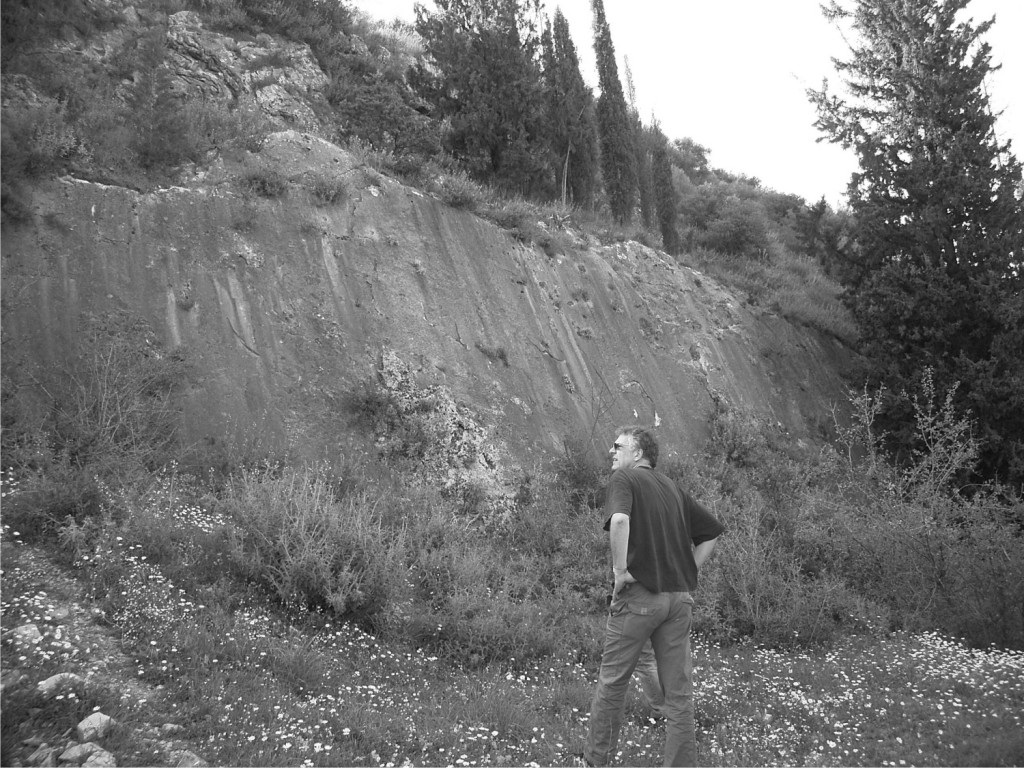The Sparta Fault in Greece is marked by one of the most impressive mountain fronts I’ve ever seen. A huge (yes, huge!) fault scarp has developed, traceable for kilometers; the fault itself is more than 60 km long. Ancient Sparta has been devastated by the last known major (M>7) earthquake that happened at this fault in 464 BC. Now, Papanikolaou et al. have published new data on this fault. They examined how paramaters like throw, segmentation, and catchments vary along strike and created a new seismic hazard map, showing a site-specific long-term recurrence interval of ~1.8 ka (+/- 450 a). Thus, the next big one might happen at any time and it is expected that Sparta, being situated on the hanging wall, could perceive intensities up to IX. Not a nice scenario. By the way, the national building code concerns Sparta to have the lowest seismic risk category… It turns out that time-dependent probabilities that take into account the concept of the seismic circle are far higher than time-independent estimations.
- The Sparta Fault scarp in 2009
Papanikolaοu, I.D., Roberts, G., Deligiannakis, G., Sakellariou, A., Vassilakis, E. 2012. The Sparta fault, Southern Greece: From segmentation and tectonic geomorphology to seismic hazard mapping and time dependent probabilities. Tectonophysics doi:10.1016/j.tecto.2012.08.031.
New paper on the paleoseismicity of the Wasatch Fault
The Utah Geological Survey published a report with “new information on the timing and displacement of late Holocene surface-faulting earthquakes on the Brigham City segment of the Wasatch fault zone, collected as part of a joint Utah Geological Survey and U.S. Geological Survey seismic-hazard evaluation.” (Utah Geological Survey). Previous studies at the Brigham City Segment of the Wasatch Fault suggested that the last earthquakes there occured ~2 ka ago. Given an average rupture intervall of ~1.3 ka, this would result in a high time-dependent probability of this fault to rupture. The new study focussed on trenching to confirm the last earthquakes’ dates. The authors found that two out of three investigated segments ruptured nefore 2 ka, while one segment showed hints for an event around 1.2 ka BP.
Access Special Study 142 here (PDF) or buy a hard copy here.
DuRoss, C.B., Personius, S.F., Crone, A.J., McDonald, G.N., Briggs, R.W. 2012. Late Holocene earthquake history of the Brigham City Segment of the Wasatch Fault Zone at the Hansen Canyon, Kotter Canyon, and Pearsons Canyon trench sites, Box Elder County, Utah. Special Study 142, Utah Geological Survey.





No Comments
No comments yet.